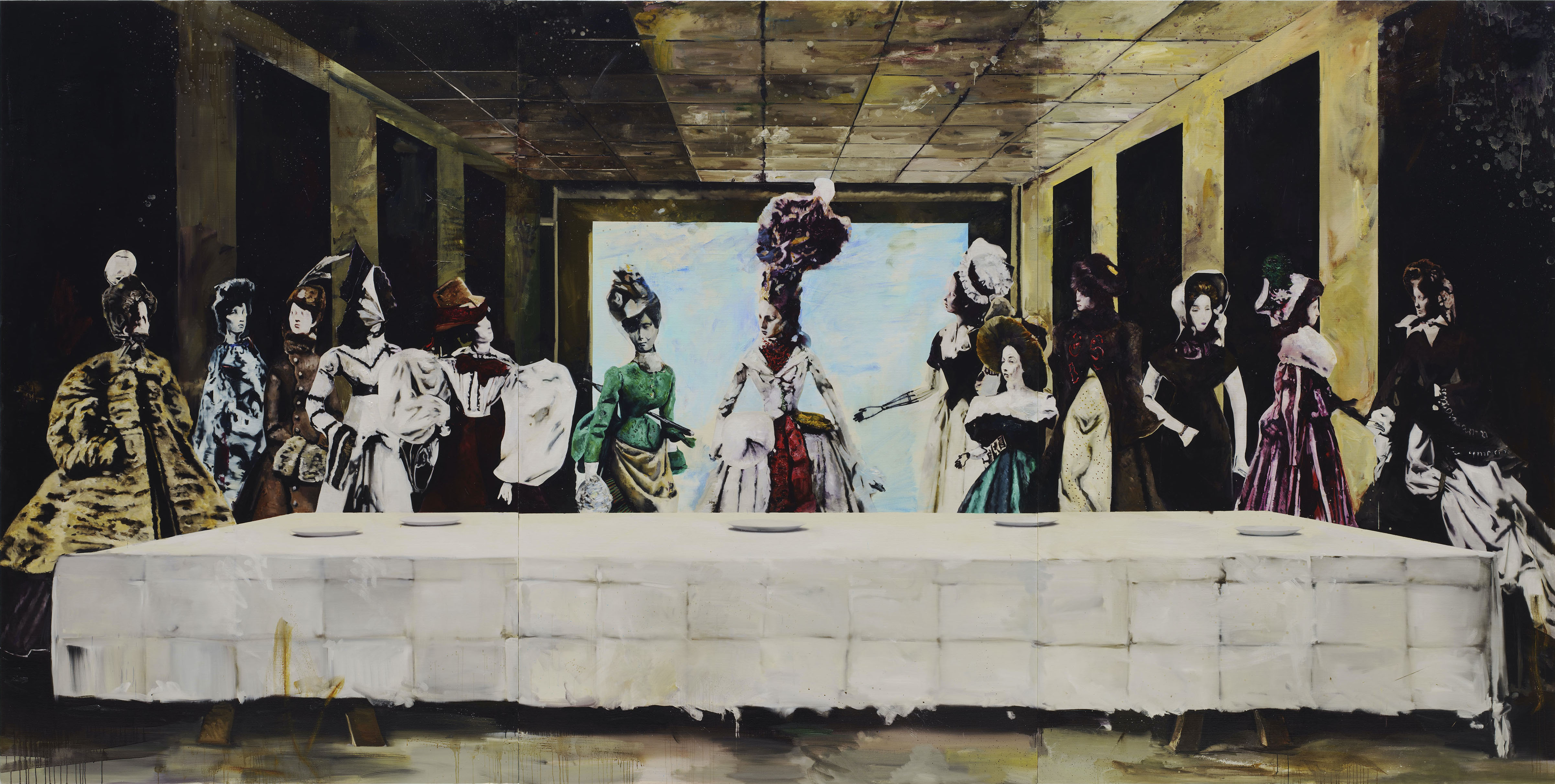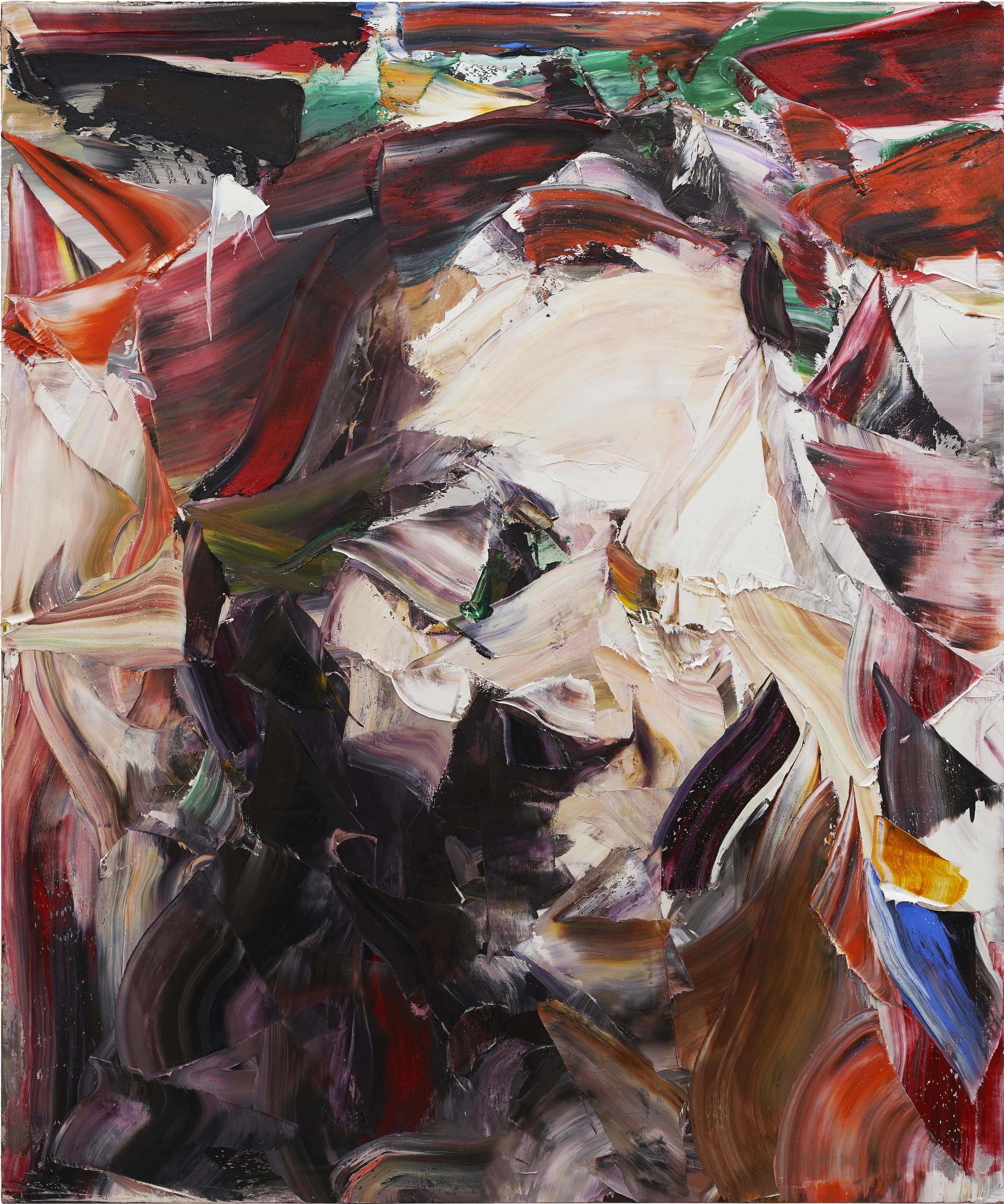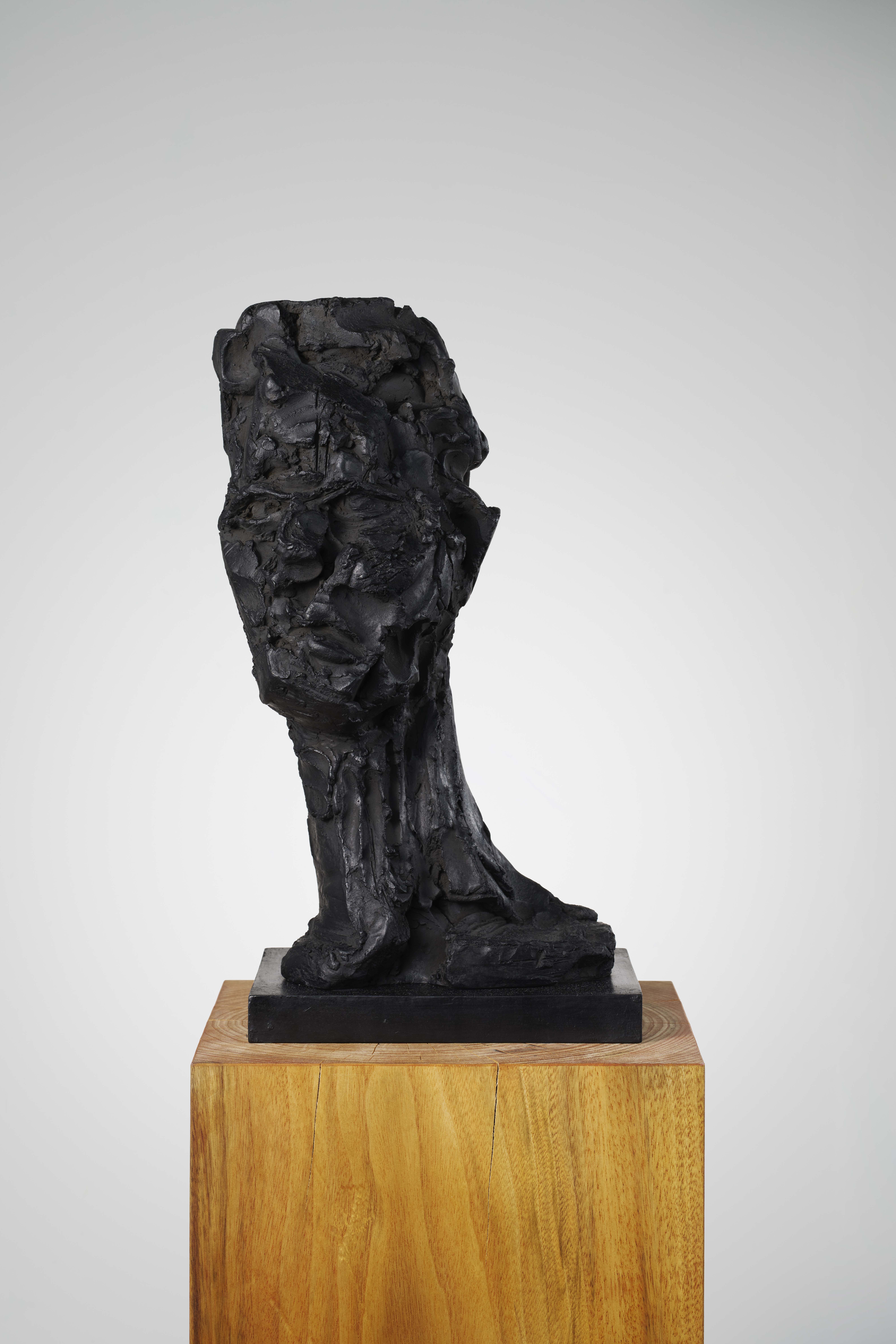Yukimasa Ida’s “Panta Rhei – For as long as the world turns”
By EMILIA WANG

YUKIMASA IDA, The Last Supper, 2022, oil on canvas, 293 cm x 582 cm. Courtesy IDA Studio Inc.
Yukimasa Ida
“Panta Rhei – For as long as the world turns”
The Kyocera Museum of Art, Kyoto
Sep 30–Dec 3
Yukimasa Ida’s latest exhibition was a large-scale exploration across painting and sculpture, and his first at a Japanese museum. Predominantly recognized for his abstract portraiture, at the Kyocera Museum of Art, Ida showcased both his maximalist tendencies and his expansion beyond abstraction toward a style unconstrained by the strict confines of one particular genre.
Ida’s self-prescribed artistic philosophy
of ichi-go, ichi-e, which can be translated as “one time, one meeting”
or “a once in a lifetime
moment,” centers
on the importance of the individual encounter in which each moment in time is unique
and unrepeatable. This is most evident in his portraiture, where faces emerge
out of abstraction when viewed from certain angles or distances. But in the
museum context Ida focused more on scale and volume, filling rooms with
paintings and alternating these spaces with bronze and wooden sculptures. Here,
Ida’s works suggested accumulation. And nowhere was this more evident than in his series
End of Today (2017– ), a room of 365 paintings that served as impressionistic
diary entries, with Ida’s thoughts recorded on canvas through a range of techniques:
realist, abstract, atonal, voluminous. What finally
emerged was less concerned with his own temporal voyages than an overabundance
of images. This mass, partly resembling an Instagram feed, spoke of the
proliferation of imagery on social media (an interpretation supported by the curatorial
text).
This flexible framework expanded to other works too, begging questions about his relationship to the material. For example, in The Last Supper (2022), a large room-size painting, Ida reinterprets Leonardo da Vinci’s masterpiece, replacing Jesus and his disciples with women in petticoats in the style of Diego Velázquez’s 1656 painting Las Meninas. The curatorial text alluded to the role of artificial intelligence, but Ida’s use of the technology is unclear. Other than a vague sense that the figures have been rendered with expressionless faces and missing hands, stylistically the painting engages more with the contemporary language of street art. The paint drips and stains on the canvas combined with a reconstruction of such an iconic work of art are reminiscent of street artist Zevs’ liquidated series. But unlike street art’s direct style and immediate visual communication, Ida’s message here seemed unsettled. The combination of his deliberately rough techniques, art historical references, and the deployment of AI might be a statement on the markers of value in the art world, but his position is somewhat vague, forcing the viewer to make their own associations about where they stand on the importance of style and value.

YUKIMASA IDA, Miko, 2020, oil on canvas, 194 cm x 162 cm. Courtesy IDA Studio Inc.
Often compared favorably to Francis Bacon, Ida’s other works in the exhibition echoed a raw, grotesque quality. The density of paint in his abstract painting Miko (2020), for example, brought out this strand of his practice through its thickly-spread fleshy hues cutting into dark purple shadows. 夢の中の⾺ (2015), which roughly translates as “the horse inside the dream,” contains similarly interesting gestures—a wash of clear blue meets the flick of the horse’s tail, the stroke embodying the vitality of expressionistic ink painting. Meanwhile, Ida’s sculptures offer vestiges of “the moment of action,” especially with regards to his process. In Self-Portrait (2023), Ida used a chainsaw to carve into a tree trunk, leaving behind splinters and rough grain as way to exacerbate the tactile engagement with his material. And in the bronze work End of today Sculpture - 6/18/2020 Self Portrait (2020), the delicate marks of his fingers scratching and clawing through the wet clay are a clear statement of the artist's presence.

YUKIMASA IDA, End of today Sculpture – 7/16/2022 Self Portrait, 2023, bronze, 45 × 27 × 21 cm. Courtesy IDA Studio Inc.
Ida’s works seen in the large-scale context of the museum undoubtedly highlighted his prolific output and stylistic breadth, albeit to the detriment of a greater understanding of his philosophy regarding unique encounters. Instead, we were left to search for small moments—the remnants of the brush hitting the canvas; the tough, bronze-cast hand-worked clay—in which we might finally appreciate ichi-go, ichi-e.








